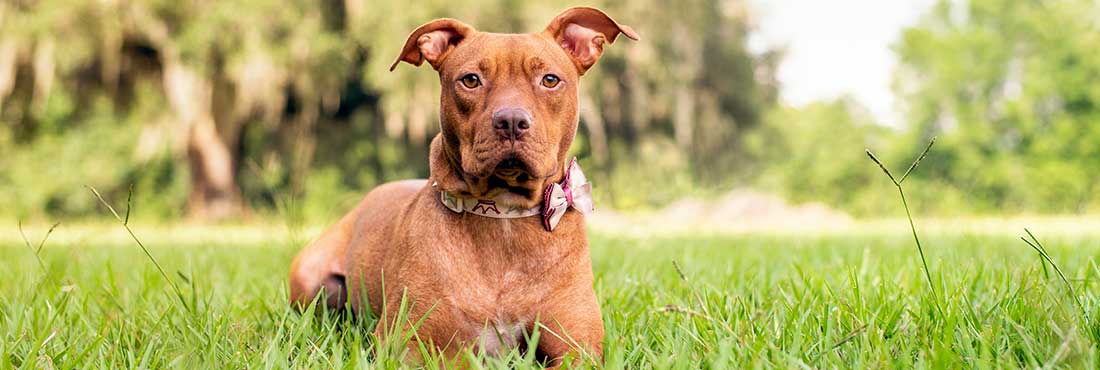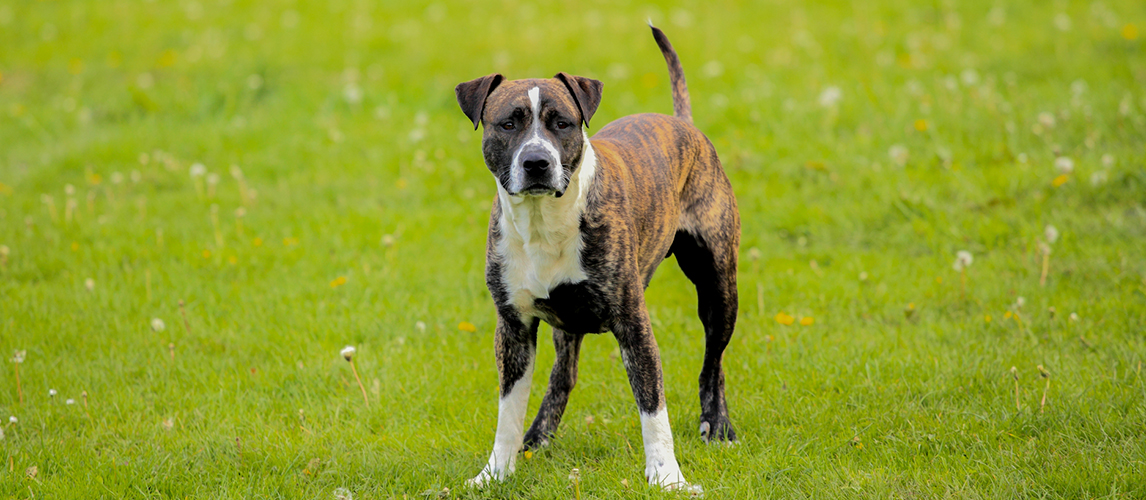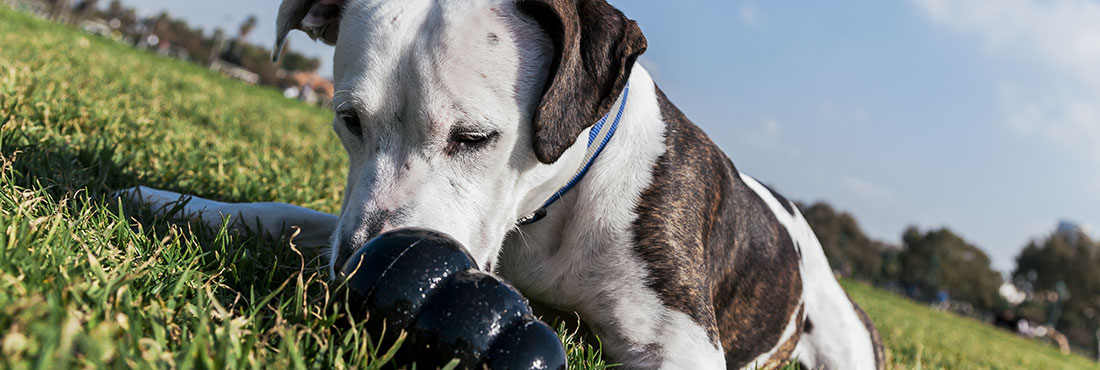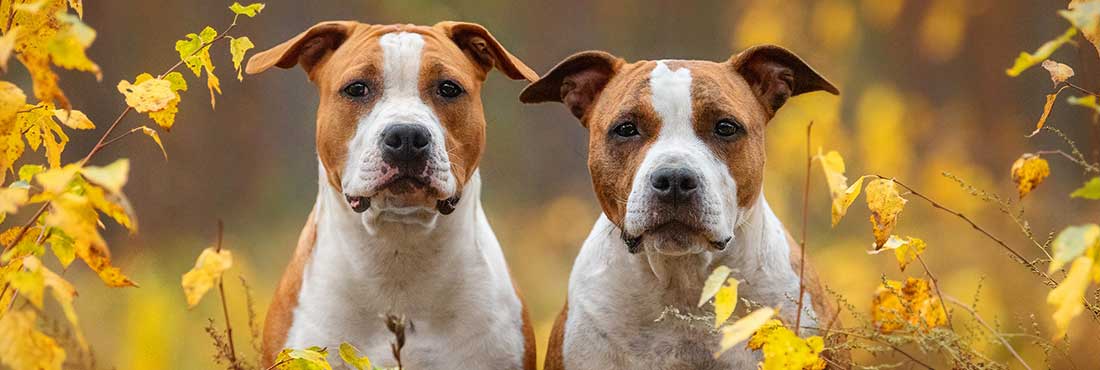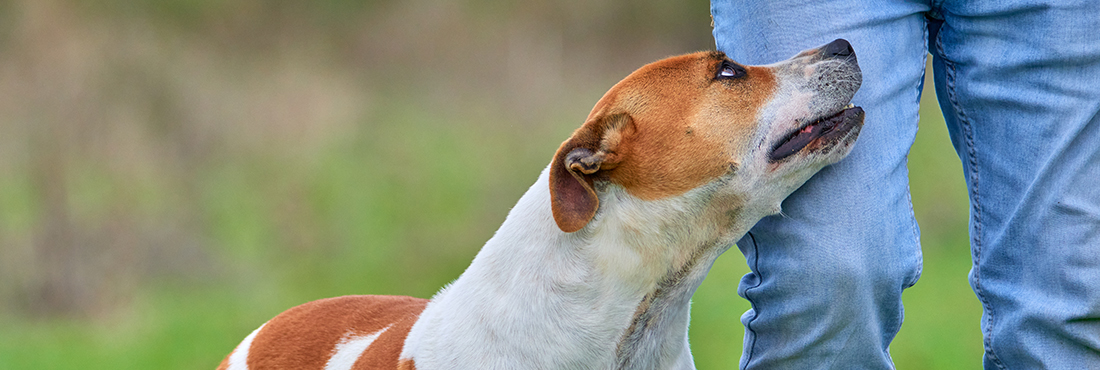Introduction to Pitbulls
It wouldn’t be right to start an article about pit bull growth without first talking a little about this breed and its reputation. In some countries, the American pit bull terrier has a negative reputation for being overly aggressive, and dog lovers are even banned from owning this dog in the UK.
But why is this?
The American pit bull terrier was originally bred from the Old English Bulldog to essentially “bait” bulls and large animals such as bears – biting them and holding them down for sport. This was outlawed in the 1800s, and although the dog became an excellent all-around farm dog, people, unfortunately, started using this breed for dog fighting. Luckily dog fighting was banned across the US, but many criminals illegally bred these intelligent dogs (without adequate training and socialization) and used this dog breed as protection dogs – this, coupled with media horror stories, is how their reputation remained.
Read more about pit bulls here.
Since then, many pit bull advocacy organizations and charities have helped people see that the American pit bull terrier is a strong, loyal, affectionate and intelligent dog that, when trained and socialized correctly, makes a superb companion.
If you are thinking of getting an American pit bull terrier or already own a pitbull puppy, then you will need to be properly informed on the pitbull’s development.
This is where we can help…
In this article, we will look at pitbull dogs, from newborn pitbull puppies to larger pit bulls, and offer essential information on their growth and how to see if your American pit bull terrier is at a healthy weight.
We will cover:
- Average pitbull weight
- Puppy weight calculator
- How to help your pitbull grow healthily
- What to do if you have an underweight dog
- What to do if you have an overweight dog
Different Types of Pit Bull
When people say “Pitbull” they often refer to the American pit bull terrier, but several other dogs fall into the “pit bull” category.
The following dogs are “pit bulls”:
- American Pitbull Terrier
- American Staffordshire Terrier
- Bull Terrier
- Miniature Bull Terrier
- Staffordshire Bull Terrier (also known as American Staffordshire terrier)
- Red Nose Pitbull and Blue Nose Pitbull (pitbull mix)
The size and weight of these other breeds can vary quite significantly, so for the purpose of this article, we will focus purely on the American pit bull terrier.
Tracking Your Pitbull’s Growth
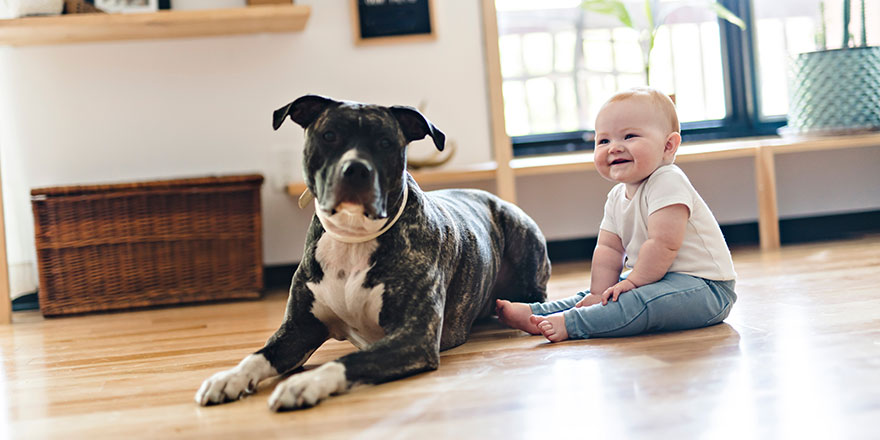
As an American pit bull terrier owner, it is imperative that you keep a close eye on your dog’s weight to best ensure that you have a healthy dog. Regular visits to the veterinarian is useful as they will be able to check your pup’s growth and look out for any potential health problems. Veterinarian visits can be costly, however, so as well as recommending that you have decent medical insurance for your pet, we also recommend that you regularly look at a weight chart – in particular pitbull growth charts like the one below, which will be able to offer advice as to whether your dog’s growth is on the right track. We advise making a record of your pitbull’s growth in a notebook, so you have a record to keep and refer back to when needed – this can also come in handy with veterinarian visits.
Average Weight for a Pit Bull Terrier
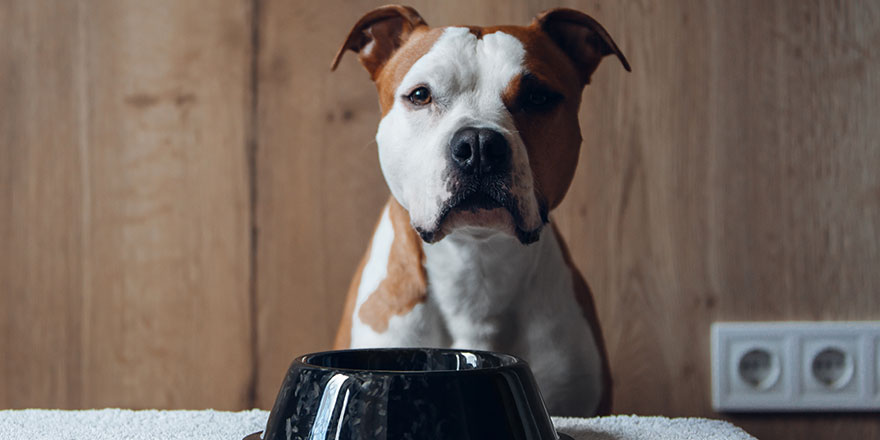
Despite their size, pit bulls are classed as medium-sized dogs because they’re not very tall. From the shoulders down, they average around 15-20 inches tall. These stocky dogs also begin their lives relatively small. A pitbull puppy is approximately 7-10 oz when born and can reach a weight of 75 lbs. This is an average estimation and can vary depending on whether or not your pitbull pup is a pure breed. Mastiff crosses can reach well over 100lbs.
It is also worth noting that your dog’s adult weight will vary depending on whether your pit bull is male or female.
Are male Pitbulls larger than female Pitbull?
On average, a male pit bull is larger than a female – around 35-65 lbs compared to a female pit bull terrier, approximately 30-60 lbs.
Pitbull Puppy Weight Chart
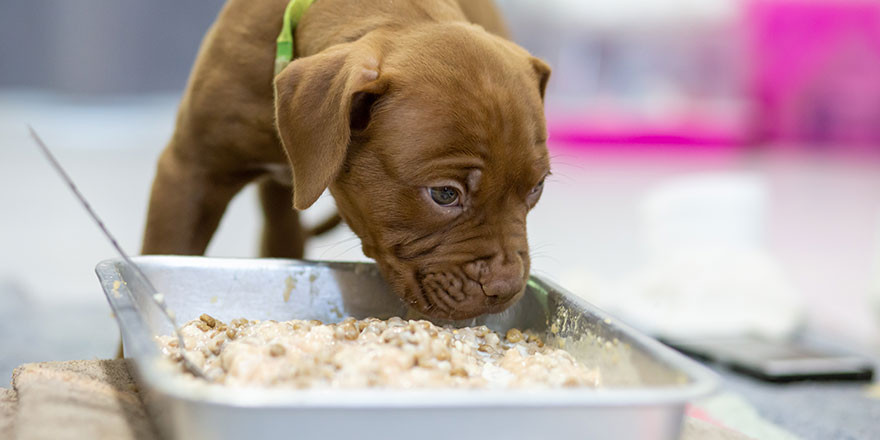
When talking about healthy weight and pitbull puppy growth, we can only provide you with the average weight as many different factors can affect your dog’s weight. While this puppy weight calculator cannot replace a trip to the veterinarian, it will certainly allow you to check if you are on the right track and see if your pitbull puppy falls into a healthy weight range.
So how much should your Pitbull weigh?
This general guide will give you an indication of average weight size from newborn pitbull puppy to adult weight so you can monitor your dog’s growth on a weekly and monthly basis.
Pit Bull puppy weight chart
Male American Pit Bull Terrier
| Male Pit Bull Age | Male Pit Bull Weight |
|---|---|
| 1 Month | 9.2 lb - 4.2 kg |
| 2 Months | 19.9 lb - 9 kg |
| 3 Months | 31.3 lb - 14.2 kg |
| 4 Months | 41.8 lb - 19 kg |
| 5 Months | 50.6 lb - 22.9 kg |
| 6 Months | 57.4 lb - 26.1 kg |
| 7 Months | 62.6 lb - 28.4 kg |
| 8 Months | 66.4 lb - 30.1 kg |
| 9 Months | 69.4 lb - 31.5 kg |
| 10 Months | 72 lb - 32.7 kg |
| 11 Months | 74.3 lb - 33.7 kg |
| 12 Months | 76 lb - 34.5 kg |
Female American Pit Bull Terrier
| Female Pit Bull Age | Female Pit Bull Weight |
|---|---|
| 1 Month | 7.2 lb - 3.3 kg |
| 2 Months | 16.6 lb - 7.5 kg |
| 3 Months | 26.7 lb - 12.1 kg |
| 4 Months | 36.2 lb - 16.4 kg |
| 5 Months | 44 lb - 20 kg |
| 6 Months | 50.1 lb - 22.7 kg |
| 7 Months | 54.4 lb - 24.7 kg |
| 8 Months | 57.5 lb - 26.1 kg |
| 9 Months | 59.7 lb - 27.1 kg |
| 10 Months | 61.5 lb - 27.9 kg |
| 11 Months | 63.1 lb - 28.6 kg |
| 12 Months | 64.2 lb - 29.1 kg |
Pitbull Puppy Development
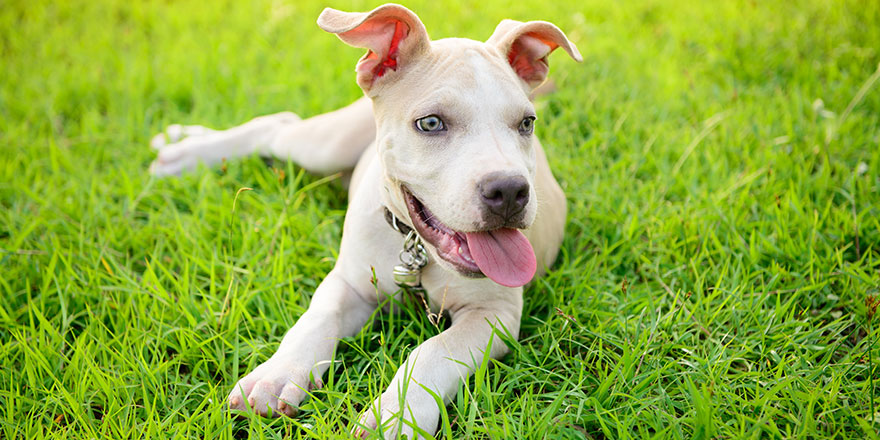
You can do many different things to monitor the weight and development of your American pit bull terrier. As well as looking at pitbull growth charts, you can also take a look at the key stages of their lives that they should be reached by a certain age.
As with human babies, your pit bull puppy will also go through vital stages in their development, and your role as a responsible pet owner is to ensure that they are developing at a healthy rate.
American Pit Bull Terrier Growth Chart and Important Developmental Stages
The growth chart below will look at the different stages of a pitbull puppy’s life.
0-3 week old Pitbull
In this neonatal stage of their lives, newborn pitbull puppies depend on their mommy pitbull for all their needs. They will need to get their warmth and food from the female adult pitbull and feel their way as their eyes will not yet be open. A pitbull puppy only needs milk at this stage as they are not yet ready for puppy food, so your newborn pitbull puppy depends solely on their mother for nutrition.
At this stage, a puppy will mainly sleep and eat. A good indication of a healthy pitbull puppy is that its weight will double at around 2 weeks. Around 3 weeks into the life of a pit bull puppy, they will start to develop teeth, and only at this time will their hearing starts to develop too.
3-7 week old Pitbull
Pitbull puppies at this age are learning fast. Therefore, this is one of the most important periods of their development. As well as learning fast, pitbull puppies are rapidly growing at this stage. Around this age, a pitbull puppy will start to soak up input from their mother, litter mates, owners, and what they see in the world around them.
Positive interaction with your pitbull dog will ensure healthy pitbull puppy growth. Your American pit bull terrier is still a baby at this stage, so positive reinforcement is vital. A pitbull dog can also develop phobias at this age, so it’s important to gently socialize them and let them interact with other people comfortably.
At 7 weeks, you will have an entirely different American pit bull terrier. They should now be able to eat solid food, bark, play, and even wag their tail.
7-12 week old Pitbull
At age 7 weeks, young puppies are ready to go to their new home, but it is always best to leave it a few extra weeks. Your 10-week-old pitbull will be better socialized, and bringing them to your home earlier can be detrimental to their development – if they don’t get enough time to learn from their litter mates, this can develop into behavioral issues.
It is at this age where you can start to give them basic training. Keep it simple as they are still very young – you can teach them how to sit and wait for food at this stage.
12-16 week old Pitbull
Possibly one of the most challenging stages of pitbull growth – around this time, your cute little American 12-week-old pitbull terrier will test your boundaries and display natural stubborn tendencies. Training your American pitbull terrier at this stage of their development is vital.
If you haven’t enrolled your Pittie into a special dog training program and have little to no experience with this breed of dog, then it’s important to do your research. At this age, it’s important to socialize your dog and expose them to sights, sounds, and other things that they may have not encountered before – such as children, loud noises (such as vacuum cleaners), and other pets. If they are to attend a dog obedience school, ensure they have had their vaccines first.
Your pit bull will develop adult teeth and want to chew and chew. Therefore it will be important for them to have access to a range of specially designed toys for pitbull teething – this will hopefully (but never completely!) prevent them from chewing your shoes and furniture.
16-40 week old Pitbull
If you own a female American pit bull terrier, they may enter their first heat at this stage. At this stage of their development, you may look at spaying or neutering your pitbull to prevent unwanted litter and negative behaviors from developing.
Consistent obedience training is vital as your dog will want to test your boundaries and authority even more at this age. Dominance play such as tug play is not advised at this stage, and firm training is needed to learn not to use their mouths inappropriately – i.e., chewing people!
10 months – 1 year old Pitbull
Despite your pitbull’s adult size, your dog is still a puppy, and mentally they will still behave like one. Again, at this stage, it is important to use positive reinforcement and a firm tone of voice to nip bad behavior in the bud.
Your American pitbull terrier needs lots of exercises to burn off excess energy. Locking your dog or not taking them for enough walks will result in an unhappy dog and bad behavior. Avoid tug-of-war dominance games and opt for a game of fetch instead – not only will this help them get enough exercise, but it will also help the dog/owner bond develop healthily.
Adult Pitbull
After 12 months, you now have an adult dog that can eat adult food. A pitbull’s adult size should be around 21kg for a female and 34kg for a male.
Although the growth plates (cartilage that allows bones to grow) are closed around 12 months, your dog will still be gaining bulk at this age, and the chest area will become bigger this area won’t stop growing muscles until around 2-3 years old.
It’s vital to continue feeding your dog a healthy diet which will mean gradually changing their food from puppy food to adult food, and you can now take them on longer walks, too – keeping them at a healthy weight and active.
Health Issues For Pit Bull Terriers
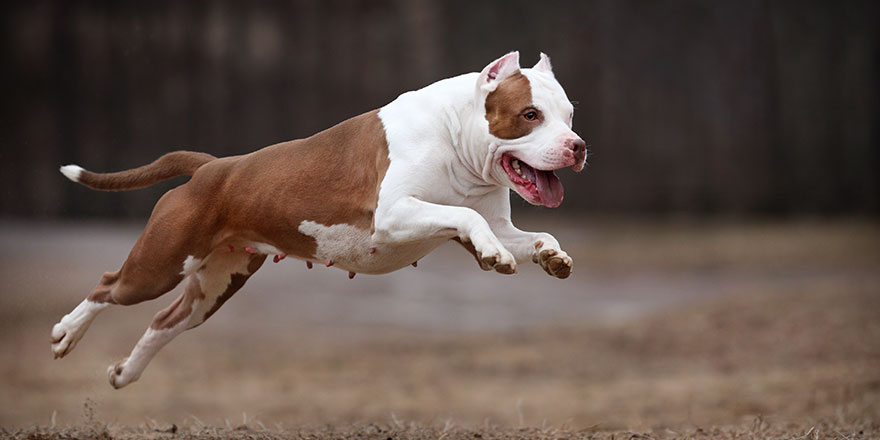
As with all breeds, American pitbull terriers are prone to certain health conditions that can impact their growth.
These are the most common health problems in American pitbull terriers:
- Skin Disorders – Unfortunately, as well as other dog breeds, American pitbull terriers are prone to skin conditions such as allergies, tumors, and in some cases, cancer. These dogs have very short hair and can be easily burnt by the sun so provide them with shade where possible. Allergies in pit bulls are usually caused by fleas, dust, pollen, and grass. A dog with a skin allergy will excessively itch and dig into their skin, often causing it to bleed. Ensure your dog is properly treated for fleas and if their symptoms persist, speak to a veterinarian for advice. Food allergies with this dog breed aren’t as common but do exist and tend to center around wheat, rice, beef, and corn.
- Hip Dysplasia – This common issue with pit bulls creates an abnormality in the hip joint and socket, leading to arthritis and pain. Pit bulls are genetically prone to hind leg and hip problems, but luckily hip dysplasia can be treatable.
- Hypothyroidism – Another common condition in dog breeds such as pit bulls is when the thyroid glands are not producing adequate hormones to function correctly. This can lead to weight gain and cause behavioral problems and aggression. Daily medication can help control Hypothyroidism.
- Heart Disease – The most common type of heart disease with this dog breed is aortic stenosis, a condition that your dog can be born with. It’s difficult to detect as there are either no signs or minor signs to detect it.
We always advise dog owners to have pet insurance in place even if their pit bull seems fit and healthy.
How to Help Your Pitbull Grow Fit and Healthy
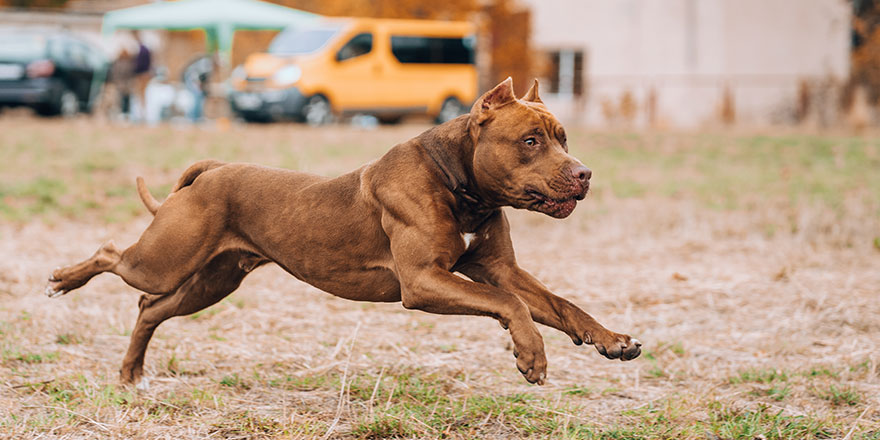
A pitbull puppy growth chart and adult pitbull growth chart will show you if your dog is at a healthy weight. Your dog’s health is vital even if they are at an ideal weight for their age. Active dogs are happy dogs, so daily exercise is important. Not only will this enhance your dog’s life, but it will ensure that they won’t develop any behavioral problems and will maintain a healthy pitbull weight. An adult dog usually needs at least 1-2 walks a day, this will keep them strong and fit and help you bond with your dog too.
Proper nutrition is vital for pitbull growth. If your American Pitbull Terrier isn’t eating the right food, then they will not be living their best life. The type of dog food this dog breed requires is rich in protein, high in quality, and provides the best balance of fats, minerals, vitamins, fiber, and protein – this will help your pit bull develop a fit and healthy body.
Play is important too. You should ensure that your pitbull has access to suitable toys to keep them happy and active. As with other dogs, an unhappy and bored pitbull will likely develop unfavorable behaviors.
Conclusion
As a responsible dog owner, it’s a good idea to keep an eye on growth charts to see if your dog is developing at a healthy pace. These charts are created as a guide, but they can offer you some reassurance that your Pittie is growing at the correct rate.
Giving your pitbull the best quality food and a healthy, active lifestyle will ensure they get the best possible start in life and grow into strong and healthy pitbull terriers.
Frequently Asked Questions
A pitbull's adult weight should be around 29kg - 34kg (males often weigh a few more pounds than females so their weight will be different). If your dog looks as though they are carrying a little extra weight and you can no longer feel your dog's ribs then there are several things you can do. Firstly, if your pitbull has gained weight quickly, then be sure to speak to your veterinarian for advice as this could be a sign of Hyperthyroidism. If it has happened gradually then you will definitely want to look at the dog food that they eat. Make sure that they are eating the best quality food, not overeating and getting plenty of exercise. Resist the urge to share your food too!
If your dog's ribs are showing too much or they look underweight then take a trip to the veterinarian to check for possible health problems or allergies. Underweight dogs often appear very frail and can also suffer from hair loss too. There are many reasons why a dog could lose weight and most conditions and issues can be treatable. Ensure that they are eating a protein rich diet which is nutritionally balanced too and will help with proper pitbull growth and may help them gain weight.
American pitbull terriers are pregnant for approximately 8-9 weeks. If you suspect that your pittie is expecting then a trip to the veterinarian is vital.
Make sure that you are feeding your pitbull with the best puppy food on the market and be sure to regularly check a pitbull growth chart to see if they're weight is on track. If their growth seems stunted and they are eating healthily then check with a professional. Hookworms and roundworms can cause stunted growth and they will be able to detect this and treat it fast.
Usually an 18 month old pitbull will be fully grown, but their muscles will continue to develop for a while - 3 years old. It is important to note that a pitbull growth chart only acts as a guide so if in doubt always consult a professional for advice.
Looking at a pitbull growth chart will give you a rough indication of the size that your pitbull will grow to but this is only a guide and many factors can affect how a puppy grows. If you take a look at their bloodline it may give an indication to how big your pup will grow.
If you look at a puppy's paws this may give an indication to its final weight and size. Generally speaking of your dog's paws look too big for their body then they may have another growth spurt on the way!

